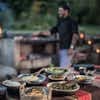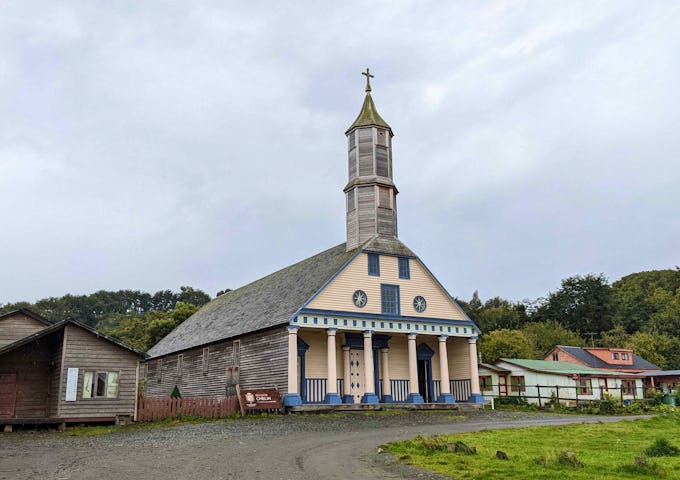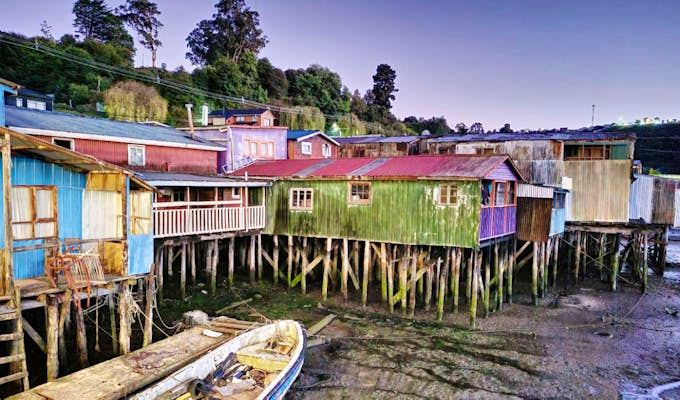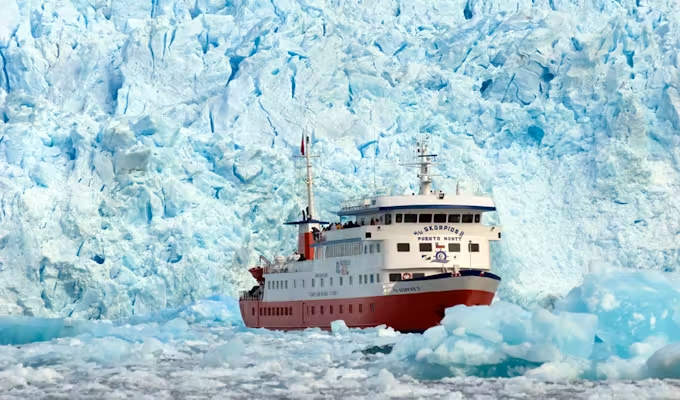Castro
Castro is the largest town on Chiloé island and also the oldest: the conquistador and royal governor of Chile Martín Ruiz de Gamboa founded a settlement on the quiet estuary here in 1567 to serve as a base to conquer the island’s Huilliche people. The town is famous for its shingle-roofed palafitos (waterfront stilt houses), which give it a much more attractive air than when a young Charles Darwin passed through in 183 and judged it a forlorn and depressing town. Today, it’s the island’s thriving capital and an important centre for Chile’s salmon industry.
Castro’s most famous attraction today is the Iglesia San Francisco de Castro – one of the 16 wooden Chilote churches that make up the island’s UNESCO World Heritage listing. While many of Chiloé's churches can be rather plain in their beauty thanks to their Jesuit roots, the Franciscan church has an exuberant riot of colour covering its neo-Gothic twin-towered exterior. It was built in 1912 to replace its predecessor which had burned to the ground, and hides its iron frame in brightly painted alerce wood, with buttery yellows offset by mauve and violet details. The interior is plainer, with richly polished wood everywhere.
Just south of Castro is a second prominent church, Iglesia Nuestra Señora de Gracia de Nercon, with a tall tower easily spotted from the road.
Castro has two diverting museums: the Musei Regional de Castro on the main square, which has fine displays dedicated to the original Huillipihe inhabitants, and the Museo de Arte Moderno de Chiloé, which brings the island’s story up to date by showing off Chiloés burgeoning arts scene.
Castro’s Mocupulli airport (code MHC) is 20km north of the town and has daily flights to Santiago, which take just under two hours.
Photos of Castro
Map of Castro
Nearby landmarks










